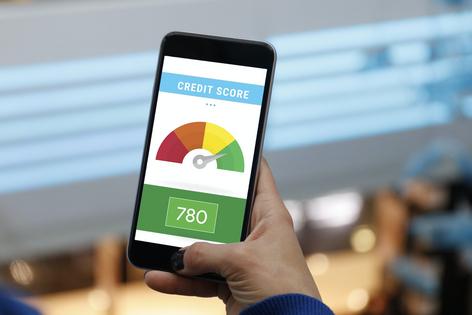How do credit scores work? 2 finance professors explain how lenders choose who gets loans and at what interest rate
Published in News & Features
With the cost of borrowing money to buy a home or a car inching ever higher, understanding who gets access to credit, and at what interest rate, is more important for borrowers’ financial health than ever. Lenders base those decisions on the borrowers’ credit scores.
To learn more about credit scores, The Conversation consulted with two finance scholars. Brian Blank is an assistant professor of finance at Mississippi State University with expertise related to how firms allocate capital, as well as the role of credit in mortgage lending. His colleague at Mississippi State, Tom Miller Jr., is a finance professor who has written a book on consumer lending, in addition to providing his expertise to policymakers.
Lenders stay in business when borrowers pay back loans.
Some borrowers consistently make prompt payments, while others are slow to repay, and still others default – meaning they do not pay back the money they borrowed. Lenders have a strong business incentive to separate loans that will be paid back from loans that might be paid back.
So how do lenders distinguish between good borrowers and risky ones? They rely on various proprietary credit scoring systems that use past borrower repayment history and other factors to predict the likelihood of future repayment. The three organizations that monitor credit scores in the U.S. are Transunion, Experian and Equifax.
Although 26 million of 258 million credit-eligible Americans lack a credit score, anyone who has ever opened a credit card or other credit account, like a loan, has one. Most people don’t have a credit score before turning 18, which is usually the age applicants can begin opening credit cards in their own name. However, some people still have no credit later in life if they don’t have any accounts for reporting agencies to assess.
Credit scores simply summarize how well individuals repay debt over time. Based on that repayment behavior, the credit scoring system assigns people a single number ranging from 300 to 850. A credit score ranging from 670 to 739 is generally considered to be good, a score in the range of 580 to 669 would be judged fair, and a score less than 579 is classified poor, or subprime.
The two most important factors in credit scores are how promptly past debts have been paid and the amount the individual owes on current debt. The score also takes into account the mix and length of credit, in addition to how new it is.
Credit scores can help lenders decide what interest rate to offer consumers. And they can affect banks’ decisions concerning access to mortgages, credit cards and auto loans.
Average credit scores in the United States have risen from 688 in 2005 to 716 as of August of 2021. They stayed steady at that level through 2022.
While credit card debt is at a record high, the average consumer was using just over a fourth of the revolving credit to which they had access as of September 2022.
As of 2021, nearly half of U.S. consumers had scores considered very good – meaning in the range of 740 to 799 – or excellent (800-850). Six in 10 Americans have a score above 700, consistent with the general trend of record-setting credit scores of the past few years. These trends might, in part, reflect new programs that are designed to note when individuals pay bills like rent and utilities on time, which can help boost scores.
During the first quarter of 2023, people taking out new mortgages had an average credit score of 765, which is one point lower than a year ago but still higher than the pre-pandemic average of 760.
Developed in the late 1950s, the first credit scores – FICO scores – were created to build a computerized, objective measure to help lenders make lending decisions. Before then, bankers relied on commercial credit reporting, the same system merchants used to evaluate the creditworthiness of potential customers based on relationships and subjective evaluation.
The FICO credit scoring system was enhanced over the 1960s and ‘70s, and lenders grew to trust computerized credit evaluation systems. Credit scores really began to exert an influence on American borrowers beginning in the 1980s as FICO become widely used.
A major goal of the credit score is to expand the pool of potential borrowers while minimizing the overall default rate of the pool. In this way, lenders can maximize the number of loans they make. Still, credit scores are imperfect predictors, likely because most credit models assume that consumers will continue to act in the same way in the future as they have in the past. In addition, some believe that various risk factors make credit scores imperfect. Credit modelers, however, continue to make progress by making continuous technological innovations. Even FinTech lenders, which strive to go beyond traditional credit models, heavily rely on credit scores to set their interest rates.
Recently, “Buy Now, Pay Later” accounts have been added to credit scoring, while medical debt has been removed.
Borrowers with poor or limited credit have challenges building more positive credit histories and good credit scores. This challenge is particularly important because credit scores have become more widely used than ever because of the increasing availability of data and growing precision of credit models.
The availability of additional data results in more precise estimates of credit scoring, which can improve access to credit for consumers who repay bills consistently over time. These so-called “boost programs” factor in other payments that consumers routinely make on a monthly schedule. Think of the number of bills that you auto pay. Boost programs add points to your credit score for the bills that you pay consistently.
Two of the most important ways to improve credit scores are paying bills on time and ensuring that your credit report accurately reflects your payment history. Simply avoiding default is not enough. Timely payments are necessary. Someone who pays the bills every three months is “caught up” every quarter. But that consumer is 90 days delinquent four times a year. Being 90 days delinquent alarms creditors. So, someone who pays the bills every month will have a higher credit score at the end of the year.
Having more credit accounts can also positively affect your credit score because having these accounts shows that many lenders find you creditworthy. As a result, you might benefit from leaving credit accounts open if you make the wise decision not to access that credit. Warning! You must not use that extra credit access to spend more money and accumulate more debt. That decision is unwise.
Why? Because managing the ratio of debt to income is also critical to a good credit score. Debt-to-income ratios of 36% or less generally indicate individuals who have income to put toward savings, which is what all lenders are looking to see and one of the best ways to improve your credit.
This article is republished from The Conversation, an independent nonprofit news site dedicated to sharing ideas from academic experts. If you found it interesting, you could subscribe to our weekly newsletter.
Read more:
Store credit cards generate corporate profits and disgruntled workers
Debt ceiling impasse: Fed rate hikes are already forcing US to spend record amounts on interest payments – and it’s going to keep getting worse
Tom Miller Jr. is affiliated with Consumers' Research, a consumer advocacy organization founded in 1929.
D. Brian Blank does not work for, consult, own shares in or receive funding from any company or organization that would benefit from this article, and has disclosed no relevant affiliations beyond their academic appointment.











Comments